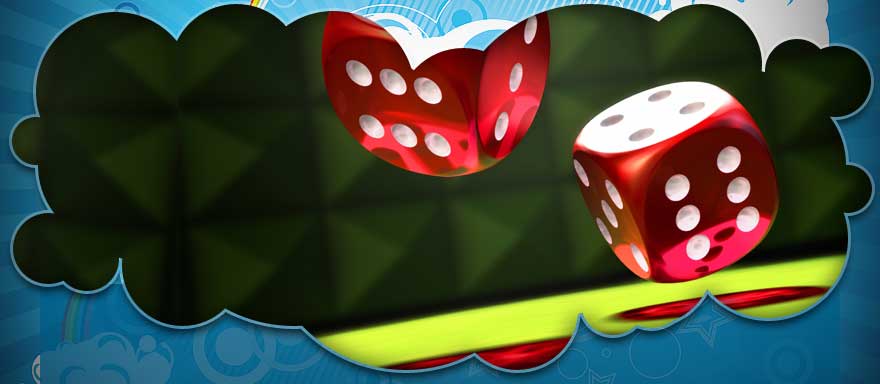Poker Tips
Poker is America's best known and most popular card game, played both at home and in the casino. While its origins are unknown, it is likely that poker is a direct descendant from the Persian game of Ās Nas. The first direct reference to the game of poker shows its origins in New Orleans around 1830.
It became exceedingly popular in America in the mid 1830's, spreading from the Mississippi and Ohio rivers to the east via the railroad.
Unlike other casino card games, poker is a game in which players play against each other and not against the house. Poker has many variations, although the rules of play and strategy differ, the hierarchy of winning hands remains the same. When playing poker in a casino, the games, the limits and the amount of rake (house commission) should be clearly posted in the poker area.
Poker
Most poker games are played with a standard 52-card deck. The cards are ranked according to the value of the number on the card or the value of the face.
The ranking, from highest to lowest, goes as such: ace, king, queen, jack, 10, 9, 8, 7, 6, 5, 4, 3, 2. Aside from being the highest card in the deck, an ace can also be used as the lowest to complete a low straight; A, 2, 3, 4, 5. In some games, one or more cards are declared wild, meaning that they can be used in place of any other card in the deck.
As well as numbers and faces there are 4 different types of suits which are used to determine the value of a poker hand. These are: spades, clubs, diamonds, hearts. Beyond determining that five cards of the same suit comprise a flush, suits have no further ranking.
Poker hands are valued based on their five card ranking. These rankings are detailed below, 1 being the highest rank:
| Rank | Hand Name | Description of Hand |
|---|---|---|
| 1 | Royal Flush | A, K, Q, J, 10 all of same suit |
| 2 | Straight Flush | Five cards of the same suit in sequence |
| 3 | 4 of a Kind | Four cards of the same rank |
| 4 | Full House | 3 of a Kind and a Pair |
| 5 | Flush | Five cards of the same suit |
| 6 | Straight | Five cards in sequence |
| 7 | 3 of a Kind | Three cards of the same rank |
| 8 | 2 Pair | Two cards of one rank, plus two of another |
| 9 | 1 Pair | Two cards of the same rank |
If two hands are tied in rank, the following rules apply:
- If two players both have straight flushes, flushes, or straights, the highest card that is part of the hand determines the winning hand. If the highest card still results in a tie, then the next highest card will determine the winner.
If both players have a full house, then the highest three of a kind will determine the winner.
If both players have three of a kind, the highest ranking three of a kind will be determined the winner.
The highest ranking pair in the hand will decide two hands with two pair. If this still results in a tie, then the remaining pairs will be compared and the highest ranking pair will then determine the winner.
- If both players have a single pair then the highest ranking pair will win. If this is also a tie, then the next highest ranking single card will determine the winner. If this still results in a tie, then the next highest single ranking card will determine the winner.
Two hands with no pairs, flushes, or straights are compared and the card with the highest-ranking single card will be determined the winner. If this still yields no winner, then the next highest card will be determined the winner.
The objective of poker is to win the pot, which is the money that accumulates as players who remain in the game keep raising their bets. Unless a game of high/low poker is being played, the player with the highest hand at the end of the game wins the pot. There are two ways to win, by holding the highest hand in the game, or by making your opponents think you've got the highest hand-in which everyone else folds leaving you to win the pot.
Poker games start with a shuffle and cut of the deck and then the players ante before the dealer deals a card. To ante, each player is required to put a small amount of money, usually a percentage of the minimum bet, into the pot. Games are played with colored poker chips that correspond to different denominations of money. The dealer is responsible for dealing each round.
Strict rules govern the betting order, which also varies with the type of poker game played. The betting order is important because the player who bets first has the disadvantage of providing other players with information about their hand before receiving any information about any other player's hand. The player who bets last has the advantage of seeing how everyone else bets before deciding whether or not to play their hand. In most games the dealer deals clockwise, starting with the player to the dealer's left.
Poker Playing Options
There are different numbers of betting rounds in different poker games. During each round, betting moves clockwise around the table and players can either check, call, raise, or fold. When you check that means you want to stay in the game, but don't want to bet. When you check, you forfeit the right to raise in the current round unless "check and raise" is allowed in your game. After someone makes the first bet, all other players can only call, raise or fold.
When you call, you match the most recent bet and place the appropriate stack of chips in front of you for the dealer to place in the pot. Another option is to raise the amount of the bet by matching the previous bet and raising the amount by an additional amount. After the bet has been raised, all other players remaining in the pot must call with the higher amount of chips, or fold. In many poker games, the bet can be raised only three times in the same betting round. When you don't think that your hand is good enough to win and don't feel like bluffing, you can fold or drop out of the hand. Depending upon the game, there might be several rounds of betting, with a card or cards dealt between the rounds.
When two or more players remain in the game at the end of the last round of betting, each of the players show their cards in a showdown. The hand with the highest poker value wins the pot. The house makes a profit by taking the rake, a percentage of each pot. The rake percentage varies from two to 10 percent, but in some cases there is a maximum dollar amount or a flat fee.
Types of Poker Games
There are two different types of poker games: draw poker and stud poker.
In draw poker you can draw new cards from the deck after the initial cards are dealt, your cards are usually dealt face down, and you bet after receiving your initial cards and after you draw new cards.
In stud poker games, you play with your initially dealt cards, some cards are face down and some are face up, and you bet after each new face up card is dealt and after the last face down card is dealt.
Both of these types of games can involve either five cards or seven, and can be played in one of two ways: high or high/low.
When a poker game is played high, the highest hand wins the pot. When a poker game is played high/low, the pot is split between the person with the highest hand and the person with the lowest hand.


